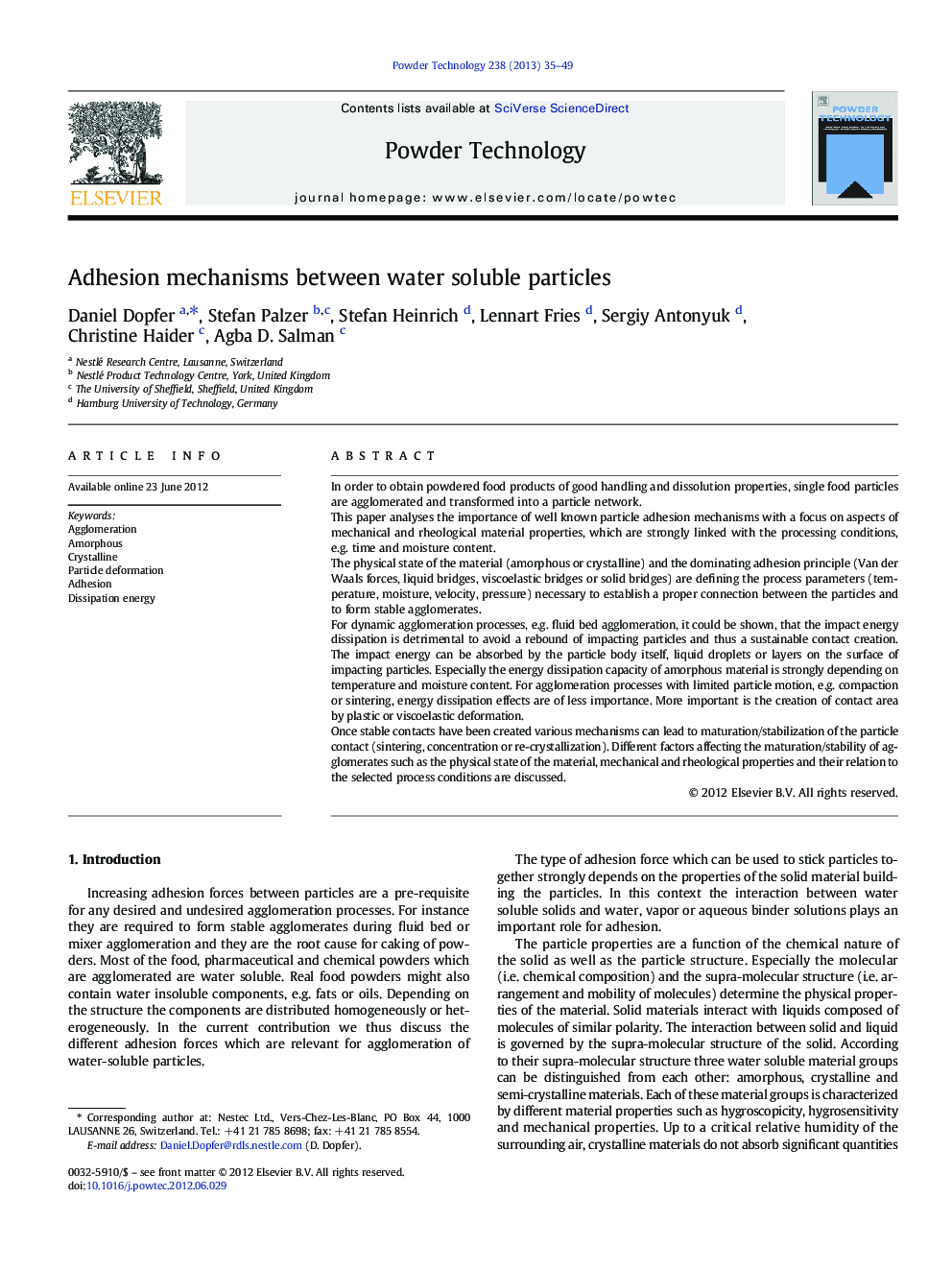| کد مقاله | کد نشریه | سال انتشار | مقاله انگلیسی | نسخه تمام متن |
|---|---|---|---|---|
| 236714 | 465683 | 2013 | 15 صفحه PDF | دانلود رایگان |

In order to obtain powdered food products of good handling and dissolution properties, single food particles are agglomerated and transformed into a particle network.This paper analyses the importance of well known particle adhesion mechanisms with a focus on aspects of mechanical and rheological material properties, which are strongly linked with the processing conditions, e.g. time and moisture content.The physical state of the material (amorphous or crystalline) and the dominating adhesion principle (Van der Waals forces, liquid bridges, viscoelastic bridges or solid bridges) are defining the process parameters (temperature, moisture, velocity, pressure) necessary to establish a proper connection between the particles and to form stable agglomerates.For dynamic agglomeration processes, e.g. fluid bed agglomeration, it could be shown, that the impact energy dissipation is detrimental to avoid a rebound of impacting particles and thus a sustainable contact creation. The impact energy can be absorbed by the particle body itself, liquid droplets or layers on the surface of impacting particles. Especially the energy dissipation capacity of amorphous material is strongly depending on temperature and moisture content. For agglomeration processes with limited particle motion, e.g. compaction or sintering, energy dissipation effects are of less importance. More important is the creation of contact area by plastic or viscoelastic deformation.Once stable contacts have been created various mechanisms can lead to maturation/stabilization of the particle contact (sintering, concentration or re-crystallization). Different factors affecting the maturation/stability of agglomerates such as the physical state of the material, mechanical and rheological properties and their relation to the selected process conditions are discussed.
The physical state of a material to be agglomerated, i.e. crystalline or amorphous, determines the dominating adhesion principle.The mechanical and rheological properties of the bridges are linked to the physical state and define the stability of the agglomerate.Figure optionsDownload as PowerPoint slide
Journal: Powder Technology - Volume 238, April 2013, Pages 35–49